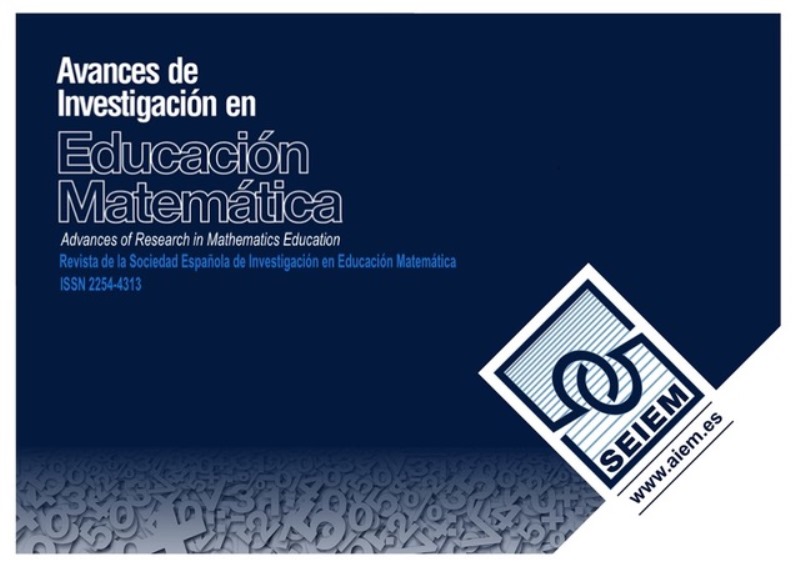Analysing mathematical activity through two theoretical tools
registers of semiotic representation and onto-semiotic configuration
DOI:
https://doi.org/10.35763/aiem.v0i10.144Keywords:
Prácticas matemáticas, registros de representación, configuración ontosemiótica, análisis cognitivo y epistémico, articulación de teoríasAbstract
To understand the difficulties and conflicts of learning is necessary to analyse the mathematical tasks and the various ways of addressing them by students. This analysis provides information about the design of the tasks and the management of knowledge in the classroom, being necessary to apply specific theoretical tools for its realisation. In this paper, we analyse a task that requires the formulation of a conjecture and its proof using figural and algebraic representations, and applying two different theoretical tools: the notions of semiotic representation register and onto-semiotic configuration. The results reveal some complementarities that allowed us to show the potential utility of the epistemic and cognitive analysis carried out. The aim is to show the potential synergy between these tools and the possibility to progress in the articulation of the corresponding theoretical frameworks.
Downloads
Downloads
Published
How to Cite
Issue
Section
License
The articles published in this journal are under a license Creative Commons: By 4.0 España from number 21 (2022).
Authors who publish with this journal agree to the following terms:
- Authors retain copyright and keep the acknowledgement of authorship.
- The texts published in this journal are – unless indicated otherwise – covered by the Creative Commons Attribution 4.0 international licence. You may copy, distribute, transmit and adapt the work, provided you attribute it (authorship, journal name, publisher) in the manner specified by the author(s) or licensor(s). The full text of the licence can be consulted here: http://creativecommons.org/licenses/by-nc/4.0.
- Authors are able to enter into separate, additional contractual arrangements for the non-exclusive distribution of the journal's published version of the work (e.g., post it to an institutional repository or publish it in a book), with an acknowledgement of its initial publication in this journal.
- Authors are permitted and encouraged to post their work online (e.g., in institutional repositories or on their website) prior to and during the submission process, as it can lead to productive exchanges, as well as earlier and greater citation of published work (See The Effect of Open Access).









